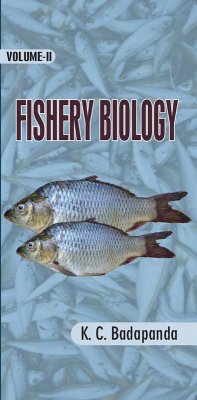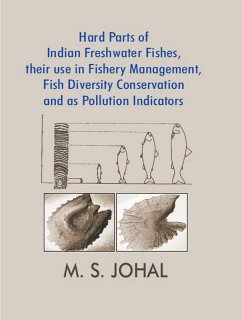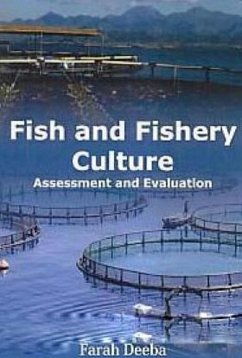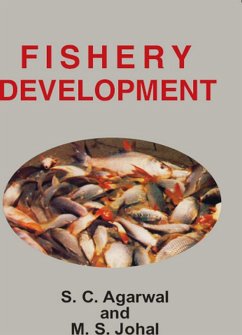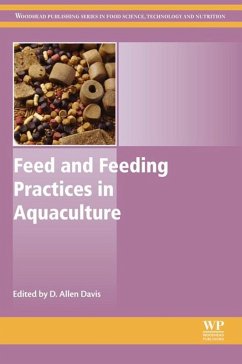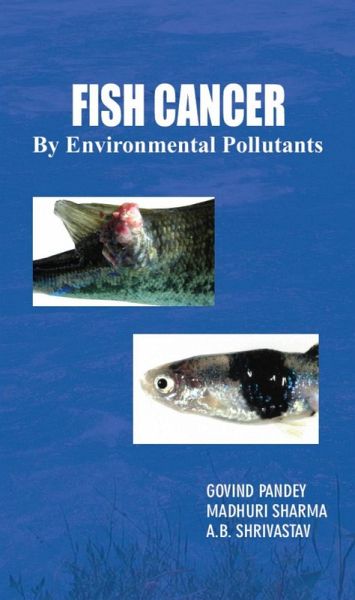
Fish Cancer By Environmental Pollutants (A Research Book On Fishery Science) (eBook, ePUB)

PAYBACK Punkte
78 °P sammeln!
Fish are exposed from different 'environmental pollutants', including drugs and chemicals. 'Heavy metals' are considered the most important form of pollution of the aquatic environment because of their toxicity and accumulation by marine organisms. The heavy metals, e.g., arsenic, cadmium, copper, chromium, iron, lead, manganese, mercury, nickel, zinc, tin, nickel, etc. can cause severe toxicity, leading to "fish cancer". High concentrations of polycyclic aromatic hydrocarbons (PAHs) and some metals in the environmental sediments cause various types of cancer in fish. The environmental contami...
Fish are exposed from different 'environmental pollutants', including drugs and chemicals. 'Heavy metals' are considered the most important form of pollution of the aquatic environment because of their toxicity and accumulation by marine organisms. The heavy metals, e.g., arsenic, cadmium, copper, chromium, iron, lead, manganese, mercury, nickel, zinc, tin, nickel, etc. can cause severe toxicity, leading to "fish cancer". High concentrations of polycyclic aromatic hydrocarbons (PAHs) and some metals in the environmental sediments cause various types of cancer in fish. The environmental contaminants/pollutants have been responsible for induction of chemical carcinogenesis in fish. Thus, fish can also suffer from the cancer. Therefore, it is essential to know how to examine the fish for tumours/cancers, to recognize gross signs of tumours and know how to prepare samples for histopathology. The field biologists/fishery scientists should develop skill in recognizing the presence of commonly occurring tumours/neoplasms in fish and in preparing samples for diagnosis. Fish is now considered as the model organism, especially to determine the contaminants which are likely to exert their impact on aquatic ecosystems. Recently, there has been increasing attention on the fish to have valuable research models for environmental cancer. 'Fish bioaccumulation markers' is used to know the aquatic behaviour of environmental pollutants. To assess the exposure to or effects of environmental pollutants on aquatic ecosystems, the 'fish biomarkers' may be evaluated. The fish biomarkers are promising tools for 'environmental risk assessment' (ERA), as supplements to existing chemical measures. In view of the above facts, the scope of this book, "Fish Cancer by Environmental Pollutants" is, therefore, to describe the various types of fish cancer caused by environmental pollutants/chemicals with special reference to significance of fish as model organism suitable for cancer research, fish carcinogens, common cancers, including skin and liver cancers in fish, fish biomarkers of environmental pollutants, and contaminated fish harmful to human health. This research book on 'Fishery Science' may serve as an insightful and resourceful referral to the teachers, scientists, research scholars and students of Fishery Science, including Zoology and Animal Husbandry. This reference book will also enhance the critical perspectives, and will offer a window into the logistics and future of Fisheries, particularly regarding the research on fish cancer.
Dieser Download kann aus rechtlichen Gründen nur mit Rechnungsadresse in A, B, BG, CY, CZ, D, DK, EW, E, FIN, F, GR, HR, H, IRL, I, LT, L, LR, M, NL, PL, P, R, S, SLO, SK ausgeliefert werden.





